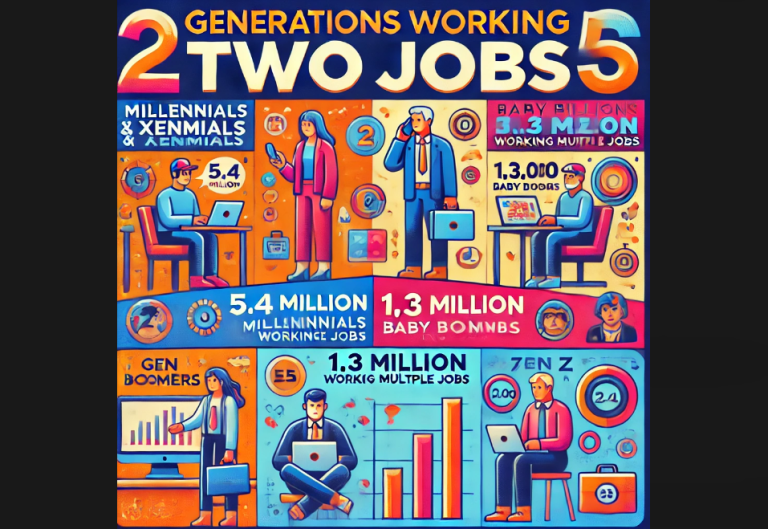A recent study has unveiled that Millennials and Xennials are the generations most likely to juggle multiple jobs simultaneously, with over 5.4 million individuals aged 25 to 54 working two jobs in 2023. The report, conducted by company formation experts at StartFleet.io, analysed data from the Bureau of Labor Statistics to identify the age groups most engaged in dual employment.
The findings indicate that those aged between 25 and 54, predominantly Millennials and Xennials, represent the largest group of multiple jobholders, totalling 5,441,000. In second place are individuals aged 55 to 64, mainly comprising Baby Boomers, with 1,303,000 working two jobs. The report also highlights that 700,000 people aged 20 to 24—primarily Gen Z—are also working multiple positions.
The full breakdown of age categories is as follows:
| Rank | Age Group | Total Number of Multiple Jobholders in 2023 |
| 1 | 25 – 54 | 5,441,000 |
| 2 | 55 – 64 | 1,303,000 |
| 3 | 20 – 24 | 700,000 |
| 4 | 65 + | 441,000 |
| 5 | 16 – 19 | 202,000 |
Women are significantly more likely to work two jobs compared to men, with 2,754,000 women in the 25 to 54 age group holding multiple positions, compared to 2,687,000 men. The gender disparity is particularly pronounced among Gen Z, where 439,000 women aged 20 to 24 work multiple jobs versus 261,000 men in the same age bracket.
As the ongoing cost-of-living crisis drives many individuals to seek additional income, working two jobs has become increasingly common. While it is not illegal to hold two jobs, employees must be cautious not to violate their existing contracts, as some companies prohibit dual employment for full-time staff. Breaching such contracts can lead to termination of employment, making it essential for workers to understand their company’s policies before taking on a second job.
The benefits of dual employment include increased financial security and valuable experience across different industries. Many individuals find that additional roles allow them to enhance their skill sets and career prospects. However, the risks associated with multiple jobs cannot be overlooked. Increased workloads can lead to burnout, negatively affecting both physical and mental health. In demanding jobs, such as those in construction or agriculture, the risk of fatigue can jeopardise safety for both the individual and their colleagues.
The study also points out that working long hours can disrupt sleep patterns and strain personal relationships, further impacting an individual’s well-being.
To manage the challenges of holding two jobs, experts advise setting clear boundaries, communicating openly with employers, and prioritising mental and physical health. Joe Thong, spokesperson for StartFleet.io, expressed concern over the implications of this trend. “As the cost-of-living crisis continues, we are seeing an alarming increase in individuals working multiple jobs. This trend raises serious questions about work-life balance and mental health,” he noted.
The growing gender gap in dual jobholding is also a significant issue, tied to the broader conversation surrounding the gender pay gap. As working two jobs becomes more common, it is clear that this phenomenon demands attention from employers and policymakers alike.



